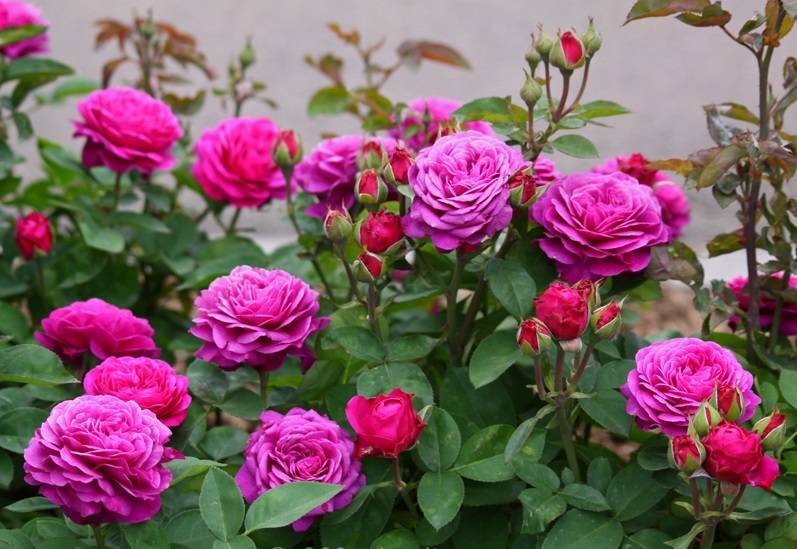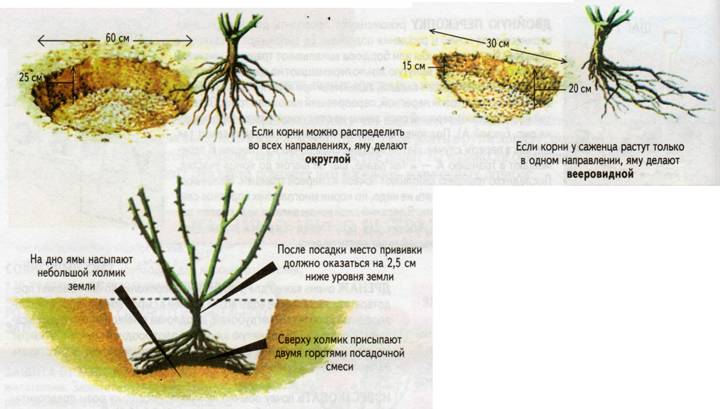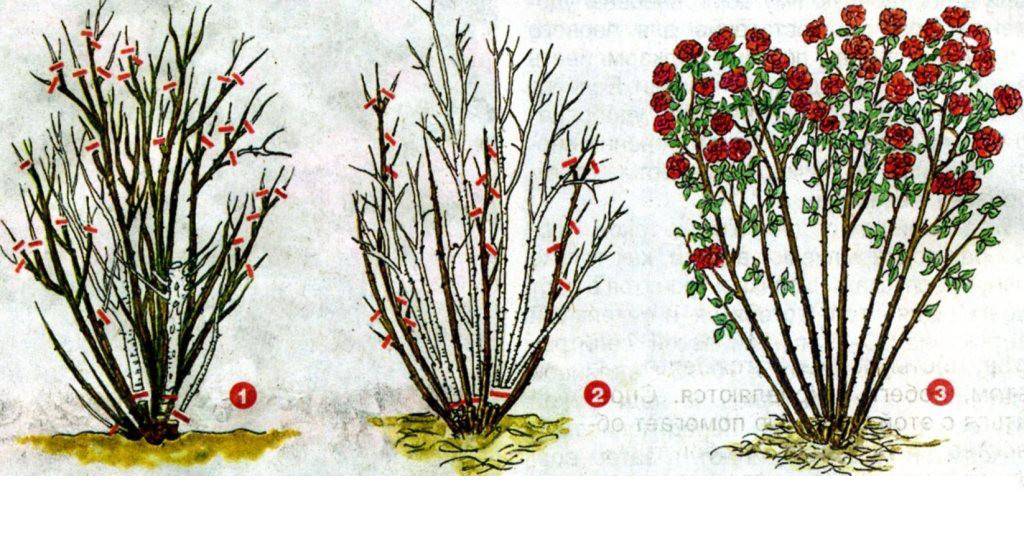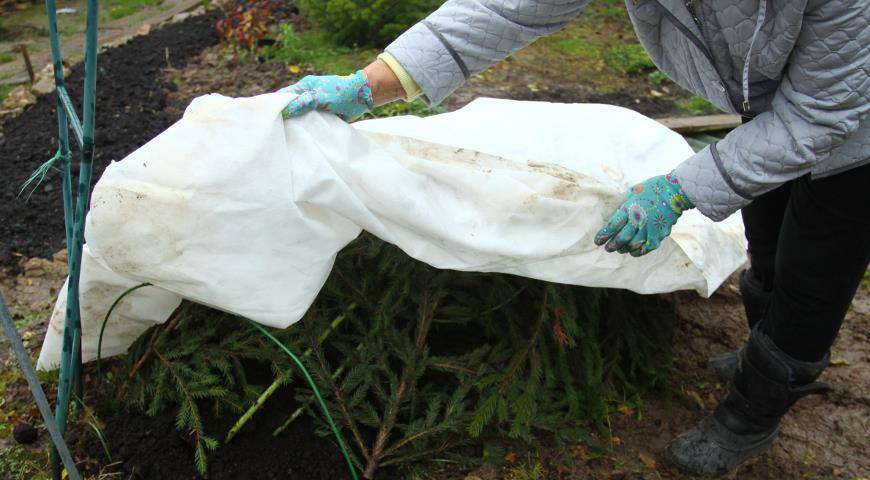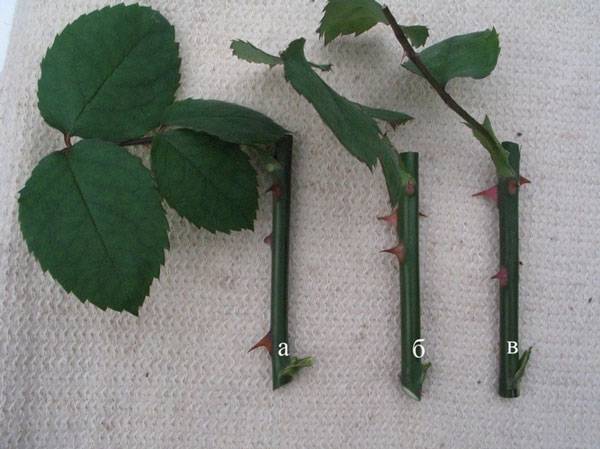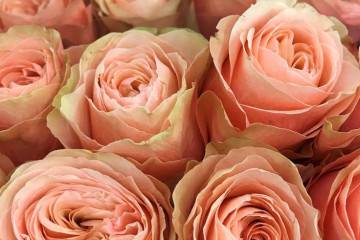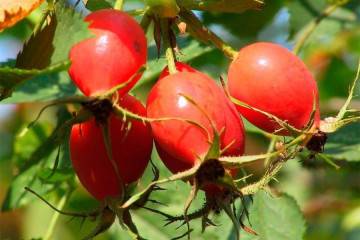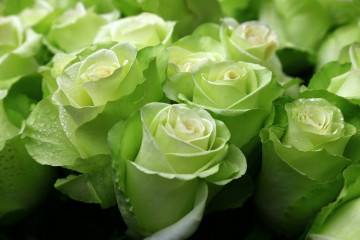Rose Heidi Klum - floribunda characteristics
Content:
Heidi Klum's unusual miniature floribunda roses are distinguished by their bright inflorescence, abundant flowering and a low compact bush. They decorate rose gardens, borders and flower beds.
Rose Heidi Klum - what is this variety
The hybrid was bred in 1999 in a German nursery, and 6 years later got its name in honor of the German model. The actress took a fancy to this variety of roses in the garden center "Dingers". Heidi Klum rose is the result of crossing of dwarf polyanthus and hybrid tea roses.
Brief description and characteristics
Heidi Klum has absorbed all the best from the mother varieties:
- miniature, neat bush;
- resistance to winters of the Middle zone;
- the beauty of the flower and the exquisite aroma.
Shrub up to 60 cm high, covered with dense dark greenery. Glossy leaves have small notches at the edges. The flowers are large, 6-10 cm in diameter. The color of the inflorescences is pink-lilac, coral. The saturation of the shade depends on the acidity of the soil. 5-6 buds bloom on one branch at the same time.
Advantages and disadvantages of the variety
The advantages of a shrub include, first of all, its decorative effect. Beautiful inflorescences can be kept loose for up to 7 days. And during the season, the rose blooms more than once, its flowering occurs in waves. Also, the hybrid is resistant to fungal diseases.
The disadvantages of some growers include the short stature of the bush. Choosing the right place to plant it can easily turn into a virtue. Also, the rose does not bloom in strong and prolonged heat.
Use in landscape design
In decorating a plot, the rose looks great in the foreground of the compositions. It easily coexists with other plantings, coniferous shrubs and decorative flowers. This is the perfect solution for curbs.
Pink solitaire flower beds will be a wonderful decoration for house plots and parks. Mini rose garden in the garden with the participation of Heidi Klum will give an extraordinary aroma and showiness to the entire site. The flower can serve as a decoration for verandas and outdoor terraces, growing in tubs.
Growing a flower
The Heidi variety, like other hybrids, is adapted to growing in the open field and is resistant to many diseases. The unpretentious bush has a number of growing recommendations.
Hybrid rose planting material is most often sold in the form of seedlings. This is already a fairly large bush that is ready for planting. The seedling has a strengthened open root system and several branches.
For the middle climatic zone and more northern regions, the shrub is best planted in April-May. In the southern regions, this is done earlier, when the earth has already warmed up enough.
Seat selection
The abundant blooming of roses maintains the sunshine. The choice of location should primarily be based on the lighting.The next nuance is the soil. Stagnant moisture is detrimental to the root system of the rose. An area with close groundwater or a depression where moisture can collect will not work. The landing site must be protected from wind and drafts.
How to prepare the soil and flower for planting
The soil needs nutritious and loose. Acidity not more than 6.5 units. A wonderful option would be black soil or loam with the addition of organic fertilizers during planting.
Planting procedure step by step
After selecting a place and preparing the soil, they dig a planting hole:
- The size of the landing hole should be 50 × 50 cm, depth - 60 cm.
- A layer of gravel or broken brick drainage is laid on the bottom of the pit. The layer thickness is at least 10 cm.
- The next 10 cm are covered with organic matter to feed the young bush. It can be compost or rotted manure.
- The remaining space in the hole is covered with prepared soil by 2/3.
- Set the seedling, straighten the roots and sprinkle with the remaining earth.
- The root collar deepens into the soil by 3 cm, so the bush will release side branches from the base of the trunk.
- The earth should be well compacted.
- The seedling is watered immediately after planting under the root. If, after watering, the ground has subsided, it is necessary to add it to the level.
- After the soil is mulched with peat.
Plant care
Immediately after planting, it is necessary to create a permanent care regimen for the rose. She systematically needs:
- loosening the soil and removing weeds;
- watering and feeding;
- pruning;
- disease prevention.
In the fall, the plant prepares for wintering; in the spring, you need to be able to properly wake up the bush.
Watering rules and humidity
Watering is needed regular and plentiful - 15-20 liters per bush. It is important to water only after the soil has dried out from the previous watering. The plant does not tolerate stagnant moisture. In hot and dry periods, watering is needed at least 2 times a week. Water is needed separated and not cold. The best time to water is before sunrise or after sunset.
Top dressing and soil quality
Nutritious soil during planting plays an important role for the rooting and healthy growth of the bush. Regular feeding is needed from the beginning of spring, after the rose awakens. Nitrogen-based fertilization is applied until summer. This gives impetus to the growth of green mass. With the onset of flowering, potash and phosphorus fertilizers are needed. These additives support flowering and vibrant bud color.
Pruning and replanting
The procedure must be carried out throughout the growing season:
- in the spring, medium pruning is carried out. All bad and damaged branches are cut off after winter. Healthy shoots are cut to 5-7 buds. Such pruning provokes abundant and early flowering. Mature bushes are cut even shorter, up to 2-4 buds. Such pruning provokes rejuvenation of the bush and the growth of young shoots;
- in the summer, they carry out regular pruning of faded branches along with the top;
- autumn pruning is more of a preventive nature. Too long lashes, dried branches, diseased shoots are removed.
Features of wintering a flower
Haidee rose winter wonderfully even in Siberia. The snow cover protects the plant from freezing. The main thing in wintering is the timely installation and removal of the shelter. You should start insulating the bush after the frosts become resistant. Of course, you should not compare it with Canadian varieties, but the rose will confidently withstand a temperature drop to −7-10 ° C.
The first stage of warming is root protection. For this purpose, the bushes are spud with earth, compost or humus. The branches are insulated with spruce branches.
After that, a metal or wooden frame is installed around the bush 20-30 cm higher than the bush.The frame is wrapped with non-woven fabric, protecting the branches from ice and wind. The top is wrapped with a film, leaving access for air from the sides.
Blooming rose
The advantage of this variety is the incredible beauty of the flowering, which is long, abundant and lush. According to the degree of bud blooming, the petals acquire a silvery tint.
A period of activity and rest
Throughout the warm season, flowering occurs in waves. By the end of August, it dies down, the rose prepares for a dormant period.
Care during and after flowering
The flowering bush needs to be maintained with regular fertilization with phosphorus and potassium. It is also important to remove wilted flowers so that the rose does not waste energy on the formation of fruits. The branch must be cut off along with the top. Such pruning provokes an even greater ejection of buds.
What to do if it does not bloom
The lack of flowering can be for several reasons:
- prolonged heat during flowering;
- lack of nutrients (lack of fertilization or depleted soil);
- lack of spring pruning of the bush or improper pruning;
- disease or pests.
After finding out the reasons and eliminating the gaps in the care, the rose recovers and releases flower buds.
Flower propagation
To preserve all varietal qualities, the hybrid is propagated by cuttings. A plant that is no longer young can be propagated by dividing the bush or by basal processes.
The beginning of summer is suitable for cuttings. After the first wave of flowering, young shoots are cut off. For dividing a bush or planting root shoots, the best time is spring.
The cut stalk should be 10-12 cm long. The bottom cut is made at an angle of 45 °, the top cut is straight. There should be at least 3 buds on the handle, the lower foliage should be removed completely. The twigs are planted at an angle. A greenhouse is made of film or glass from above.
Diseases, pests and ways to control them
Like all hybrids, Heidi is resistant to many fungal diseases. To prevent pests, it is necessary to regularly treat rose bushes with insecticides. It is also important to conduct regular inspections of the bushes for the presence of:
- bronze beetles;
- rose leaf roll;
- green rose aphid;
- rose leafhopper;
- spider mite.
All diseases of rose bushes and pests are caused by improper care. Fungicides help against diseases, and insecticides help parasites.
Heidi Klum Rose is a rose with an indescribable aroma, stunning beauty of inflorescences and rich color of buds. A miniature shrub will decorate flower beds and rose gardens for a long time, and caring for it does not differ from that of ordinary roses.
